Canyon Speedmax CF 7.0 for U.S. Buyers
It is a notable truth that a person’s means of conveyance is invested with more than simply the value of its utility. The car you drive, the horse you ride, your skateboard, your boat or your bicycle has a personality. (In fact, some bikes have more personality than their owners!)
Nevertheless bikes, like horses and trucks, have jobs to do. Some of those jobs are more urgent than others. Job one: It shouldn’t break. Especially when you’re aboard. For bikes sold directly to the consumer, the order of importance of these jobs might change. For example, the ease of assembly might rise in importance, because you are the final assembler.
I’m going to write about the quality of this bike’s ride – the fit, the handling, storage and all the typical stuff – but also I’ll write through the lens of a consumer having a bike box dropped off at his door.
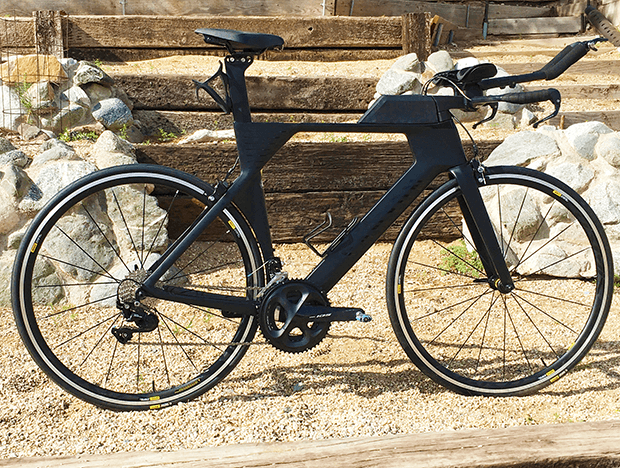
The Purpose of this bike
The Speedmax CF 7.0 is a consumer direct product, and it sells for $2,599. This is the entry point for most customers. About half of you will buy a tri bike this year, and about 10 percent of you expect to pay less than $2000 for your new tri bike, or you intend to buy a tri bike used. Another tenth of you expect to pay between $2,000 and $2,500. The rest of you – the other 8 in 10 – will pay more than $2,500 for your tri bike, and 20 percent of you expect to spend between $2,600 and $3,500. This bike here is priced right in there, competing with Cervelo’s P2, QR’s PRfour, and so forth.
This is not a new bike. It’s 2 or 3 years into its life cycle. Here’s what we wrote the last time it was intro’d. What’s new, of course, is that if you live in the US it’s both available, and it’s in stock, in most or all of the 5 sizes from XS to XL.
The Frameset
There are three features off the bat I like about this frame, and first is the seat post, and I mean both ends of it: where it disappears into the frame, the wedge clamp mechanism; and the top, where the saddle attaches. The wedge mechanism is sturdy, sufficient, clean, and it’s not finnicky. A lot of these, you have to fiddle with. I’ve had a pair of Speed Concepts and while the wedge is fine, you’ve got to loosen the wedge and then pop it, to get it to release. I never like banging on my frame. This one, you loosen, you tighten, that’s it.
On the other end, where you attach the saddle, most bike makers default to Ritchey’s hardware and it’s fine. But what Canyon has is better. Saddle fore/aft, saddle tilt, couldn’t be easier. This is one of the only bike where you’ll say, wow, it’s easier on a tri bike than it is on a standard road bike. That’s rare.
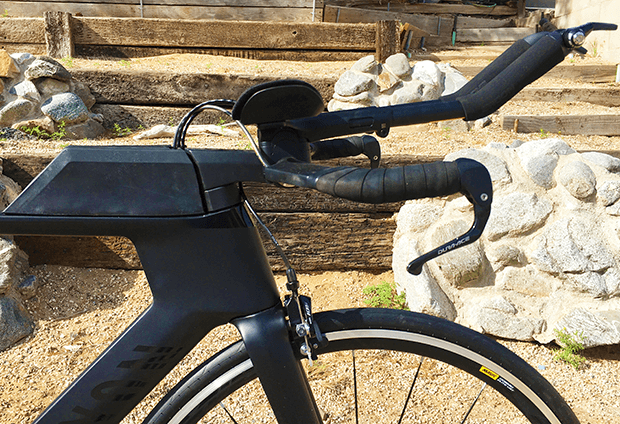
While this isn’t a frame feature per se, the stem is integrated into the look of the frame. It comes in 3 sizes, 70mm, 80mm, 90mm, and you get the stem corresponding to the size. If you’re newer to tri bikes, know that they come with shorter stems than do road bikes, by about 30mm. Tri figured this out decades ago, well before MTB did. The stem is flat, as it should be, not angled up. We want the height to come from pedestaling the aerobars, not via headset spacers or angled stems.
After having thrown shade on the whole headset spacer thing, there is a 25mm headset spacer on this bike. It’s comes on there stock. If you look at the images, it’s designed to be there; the top storage anticipates it; and it sort of artificially raises the functional frame stack on the bike by 22mm or so, from 533mm to 555mm, and reduces the frame reach from 425mm to 418mm or so. Don’t get me wrong. The stated metrics for the frame are right. Just, if that spacer is pretty much a semi-permanent fixture of the bike, then it fits like a bike that has a taller geometry. You can take that spacer out if you need to. That bike, without that spacer, and with those aerobars spec’d on that bike, gives you a super low position for those who need it – certainly lower than available on any tri bike in these lower price points.
Fit
I wrote about a Cervelo P3X a few weeks ago. I rode that bike in size L. I’m riding this bike in size M. Whaaa? Is it because they didn’t have my size? Nope! This is my size in this bike (well, I could ride either an M or an L, I’m kind of a tweener). How do I figure this? Let me explain.
I like to separate all the numbers that describe a bike into what's above, versus what's below, the "waist". Above the waist are the saddle, the handlebars. Saddle fore/aft, saddle height, cockpit distance, armrest width, handlebar elevation, all that stuff is critical. But moving all that stuff around doesn’t change the bike. The chassis of the bike. When you step into a rental car and move the seat up and down, back and forth, re-tilt the steering wheel, that doesn’t change the car.
Now, below the waist, that’s where the chassis of the bike resides, and this you can’t change.
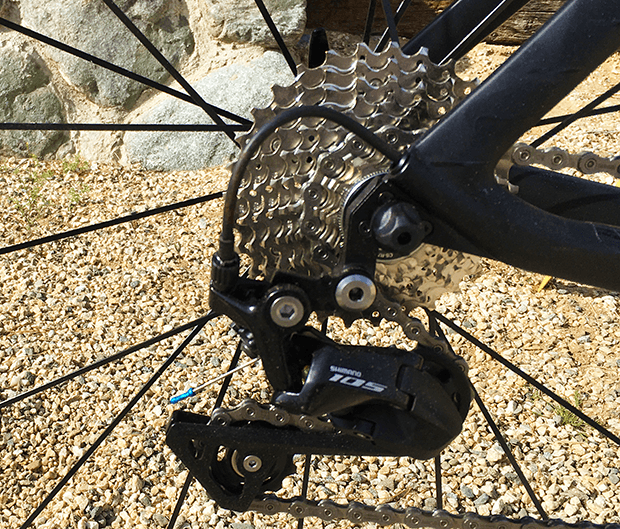
One of the metrics that I care about in bike handling is front/center. This is a below-the-waist metric. This is the distance from the crank center to the front wheel axle. Too much or too little and you feel like you’re driving a truck or riding a unicycle. A surprisingly small amount of front/center makes a pretty significant difference. The P3X has a front/center in size-L of 614mm. The Speedmaxes have a front/center in size-M of, well, not easily knowable, because Canyon doesn’t list the front/center on its geometry chart. But I measured it on the bike I have and it’s pretty darned close to 614mm, the same as the P3X in size-L. Because the Speedmax in M has a 15mm longer chain stay (rear/center) it’s actually a longer bike in wheelbase than the P3X in size-L.
Further, the cockpit in the size-M Speedmax is longer than the P3X in size-L. It’s got a frame reach of 435mm versus a 423mm in the size-L P3X. You’d think the bikes would have about the same reach if the front/centers are the same. They don’t. Why? Steering geometry. The P3X is more of a chopper, with a slightly shallower head angle and more fork offset (72.5° and 43mm). The Speedmax has 73° of head angle and 39mm of offset. They get you to the same place, same handling, each has about 62mm or 63mm of trail, depending on the exact height of the tire.
Point being, the Speedmax line is kind of like the QR PR series, or like the sizing on Dimond’s bikes: In all these bikes you may best fit on a smaller named size than you think you should. Happily, we host a thread on our Reader Forum devoted only to helping you find your correct size in a Canyon tri bike. Go there, tell Ian about yourself, he’ll tell you which Canyon you ought to buy and how it should be configured to fit you. (That’s pretty cool, hey?)
Spec
Part of why this bike fits folks pretty easily is understood through the spec, specifically in the aerobars chosen. This bike has a hybrid bar system; it’s a Profile Design aerobar, the Subsonic, but with PD’s Ergo armrests. The Subsonic usually comes with the “Race” armrest, the main feature of which are highly angular cups that lock the elbows into the armrest. It’s easier to ride this armrest if you’re looking for a narrow pad width. But a lot of people aren’t, and Profile Design’s FLYT system of aerobars features modular (swappable) parts, and Canyon choose PD’s more spacious Ergo armrest to be placed aboard this aerobar.
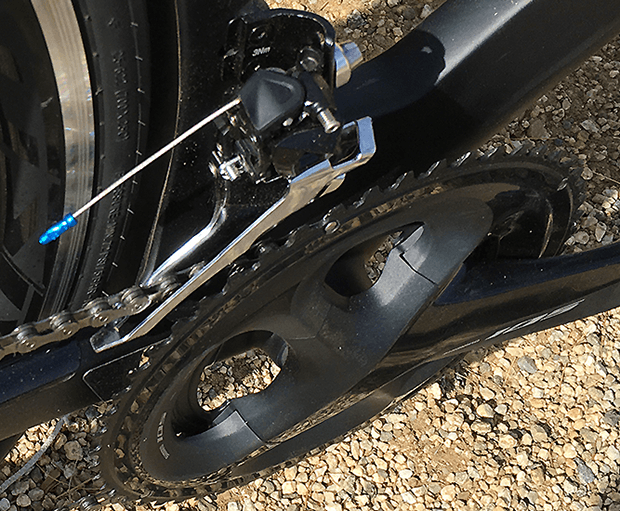
The main feature of this bike is its low profile. You can achieve a position about 20mm or 25mm lower with this bar than with most other aerobars, giving the Speedmax more fit range than otherwise. Because you can pedestal this aerobar 70mm up from its base position, you’ve got all the vertical options you’re likely to need. This Subsonic bar has tons of fore/aft pad placement options, and the extension adjustment is exceedingly liberal. The bike only comes, in this size, with a 90mm stem, sort of like the Felt IAx, with its 93mm stem, and move all the work of the up/down and fore/aft to the aerobar system. This does create an issue when it comes time to adjust the bike to fit you; and we’ll get to that when I talk about assembly and adjustments.
I love it when a Shimano 105 bike is built with, you know, Shimano 105. I had dinner last week with my old friend Gerard Vroomen, co-founder of Cervelo, currently co-owner of 3T and O.P.E.N. Cycles. He reminded me that I was the one who (for my bike brand) threw a grenade into the concept of groupset integrity. My Dura Ace bikes had Dura Ace derailleurs. Otherwise… not so much! Gerard followed suit. But neither of us particularly liked it. Our behavior was a function of Shimano’s then-pricing architecture. What I take the credit/blame for starting is a trend to which Canyon, in this bike, does not subscribe, and what you get is a 105 bike throughout, including the chain, the brakes, the cassette, the crank. If there is a corner cut, I can’t spot it.
I like the gearing: 11-30 in the back, 52×36 in the front, 11 speeds. Throughout my triathlon life, if I never needed a gear I didn’t have in a race, it’s invariably the low gear. That’s where I lost time, by not having a low enough gear. The 36×30 should take care of most of you most of the time and it beats the heck out of the 39×25 that came on tri bikes until fairly recently. This bike has 172.5mm cranks, which comes on the XS and S as well, up to 175mm in the L and XL, and I would’ve preferred shorter cranks throughout the entire size run. But I normally ride 170mm cranks so this size doesn’t affect me.
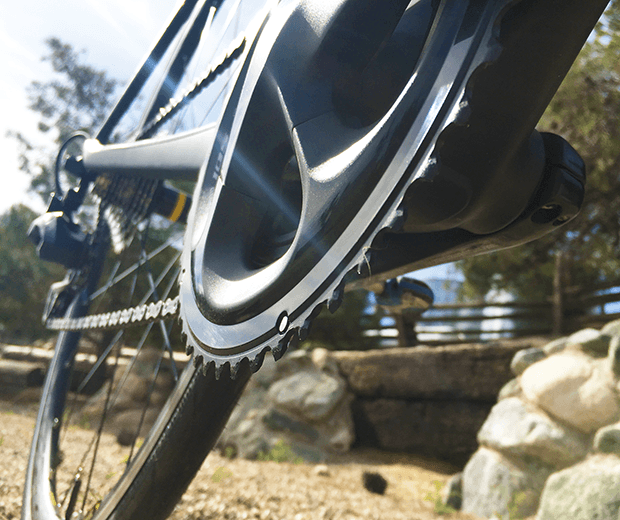
The saddle is a Fizik Mistica. This saddle is pretty nice, as OE saddles go. The wheels and tires, this is interesting. It’s my opinion that the bicycle world is going tubeless. All the way, road included. I’ve got plenty of naysayers. Just, I note that they’re largely the same folks who flushed a toilet on my head 3 years ago when I said the tri bike world should get ready for an influx of disc brake bikes. What’s interesting to me is Canyon’s choice not to go the way of the disc brake on its tri bikes – at least not as of now – but it is embracing road tubeless. Mavic Yksion Pro UST tires on Mavic Cosmic Elite wheels. These tires comport themselves quite well against, say, the Schwalbe Pro One Tubeless that Sebastian Kienle will be riding in 2019. Just, these are tubeless ready. You have to yank out the tube, install the tubeless valve them, add sealant, and now you’re tubeless. Why don’t manufacturers send you the bike just tubeless? Because sealant congeals, they don’t know how long the bike is going to sit in a box prior to shipping, so, this is how you get it. If you want it to perform to its utmost, you’ll convert to tubeless.
Packing, Assembly, Adjustments
The bike comes expertly packed as you might guess. There are no fewer than 4 manuals. You’re going to need to take all the reflectors off, unless you want to leave them on. Maybe you should leave them on. And the plastic spoke guard. Just to mess with people when you pass them.
There’s a pretty nice toolkit that comes with this bike, including a torque wrench. The aerobars come with all the bolts and pedestals you need. I chose 35mm of pedestals, and I measured the length of the bolts that came out of the bike – close to 20mm I think? – and then added 35mm to that, and that’s how I chose the bolts to use with pedestals installed (to my recollection I put 55mm bolts in the aerobars with my 35mm of pedestals). I felt, by the way, that the spatial relationship – the elevation, and the fore/aft – from the pads to the pursuits were about right, for me, on this bike, with this amount of pedestals.
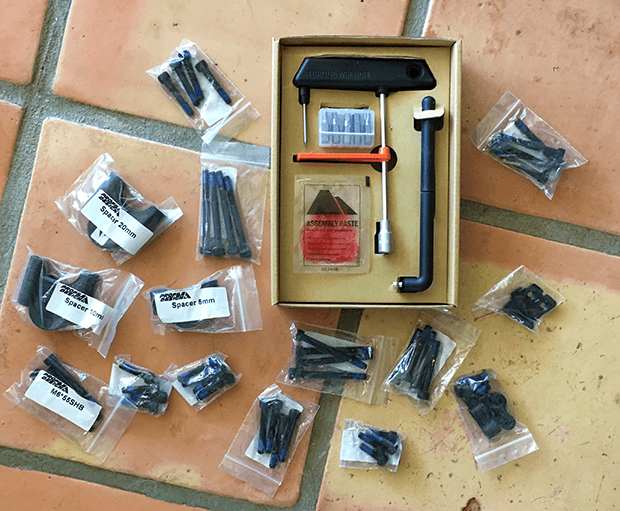
Let’s talk about the real world for a moment. I wrote awhile back about Preparers. I’m wired this way. I have to make my bike my own. When I’m done, it’s an extension of me. That means it has to fit right. Just, when it fits right, it’ll be freak luck if the cables and housing are the right length. With this bike, I had to do two things: Cut the aerobar extensions down by 35mm (the Profile Design Subsonics anticipate that you may need to do this), and shorten the housing. No problem. I cut the extensions with a tubing cutter. But to do all of this I had to decable the bike (the shift cables). What does that mean to you, with this bike?
These Canyons use segmented shift housing, like Jagwire Road Elite or Alligator I-Link. There’s an inner liner for smooth travel. Segmented housing makes shortening the housing a breeze; you just peel off what you don’t want. Just, if that inner lining breaks somewhere between the entry point (the top tube, just behind the headset) and the exit point, for both the FD and RD, then you’ve got to horse around a little to get the cable out. Fortunately, there’s a door just in front of the BB, on the underside, and on the other side of that door are cable guides. Undo the cables from the derailleurs, pop that door out with a flathead screw driver, you’ve got access now if you need it.
If you do need to decable the bike, to shorten the housing, forget reusing the factory cable – you’ll need to replace the rear cable at least, though if you’re really thrifty you could repurpose the rear cable for the front shifter. Just, be prepared in advance with some new shift cables and remember, it’s a tri bike, so you’ll probably need a cable length north of 200cm for the RD. What’s the point I’m making? If you want this bike to be just perfect, you either need a strong relationship with a good mechanic; or you need some tools, spare parts, and patience.
The Ride
I’m showing you the bike, as I built it and rode it, that is, there’s one nice picture here, which Canyon took, and then my iPhone pics, which I want you to see because it’s how I built, adjusted and rode this bike.
Here’s what surprised me. The bike has 63mm of trail, as I noted, and I thought the ride would be more sluggish or predictable (to put the bad or good spin on it). The bike was a sprightlier handler than I expected. Which I like. I don’t like tri bikes I have to muscle around. So I immediately pointed it downhill and let ‘er rip, because, the downside of a sprightly handler is a bike that’s scary on a fast descent. But it was rock solid. Mind, I didn’t quite reach 50mph, but if I’m going to get speed wobble I was going fast enough to get it. You never know what’s going to happen with any bike when you put another set of wheels on it, but I was quite happy with how it handled in every condition.

What can I say? I ride a lot of tri bikes. While my bikes have personalities – I don't name my bikes, that's where I draw the line – I tend to be somewhat mechanical in how I describe them to you all. I’m not one of those reviewers who writes like it’s a wine tasting. This bike had no oaky flavor. Hints of cherries and dark chocolate I could not discern. The bike was comfortable, a pleasure to ride, did everything I asked of it.
Funny, I read the comments from some of my contemporaries on the differences between Cervelo’s P3X and its new P5. How one was livelier than the other. I couldn’t feel that at all, except, that I got the opposite sense, that the P3X was the slightly quicker handler. Just, I don’t think it was the bike; it was the geometry. The P3X in the size I’d ride is a slightly smaller bike than the new P5 I’d ride. But this bike, this Canyon, was on the quick side, and it felt to me like the P3X. I think it’s because it’s so geometrically close to the P3X. Remember, tho, it’s this bike in size-M that’s a very close match to the P3X in size-L. And likewise up and down the size run.
I placed a cage behind the saddle of my test bike, for a bottle cage tool kit I took with me. (You never know what’s going to happen when you take a brand new bike for a ride.) The cage doesn’t come with the bike, but you see the liberal opportunities for a cage, or for any sort of box that attaches to water bottle bosses.
The Value
This is where Canyon shines. Of course. No mystery there. Remember when I said this was a Shimano 105 bike throughout? Compare this to the Felt IA16, which, for $1,100 more, starts with the notion of 105 but pretty quickly deviates into cross- and down-spec. You have to really want that IAx frame to choose the Felt. Or, you have the value the notion of your LBS sitting in between you and your Felt (and I can’t fault you for making that choice).
Here you go, if there's more you need to know about this bike Canyon Speedmax CF 7.0.


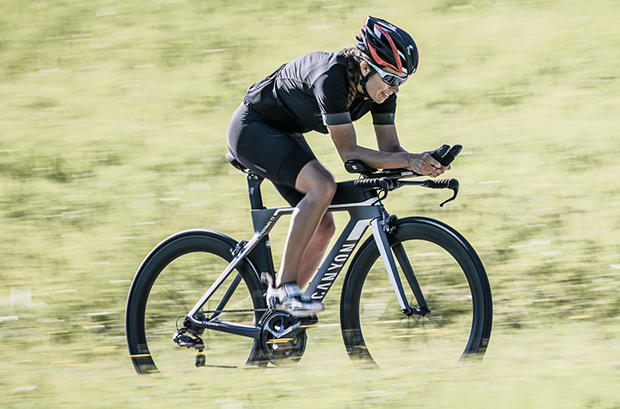
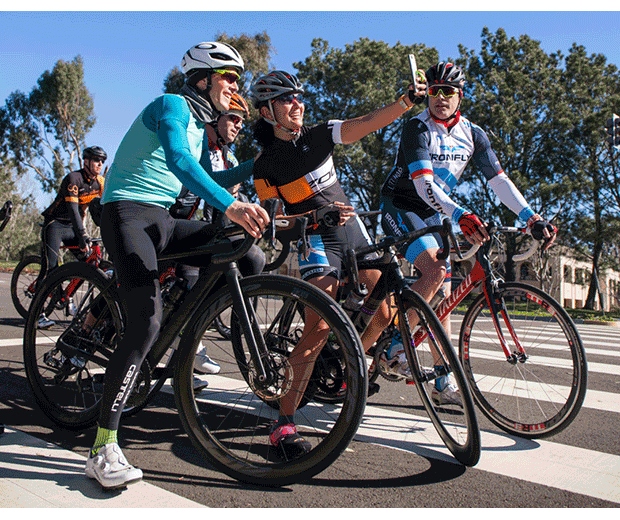
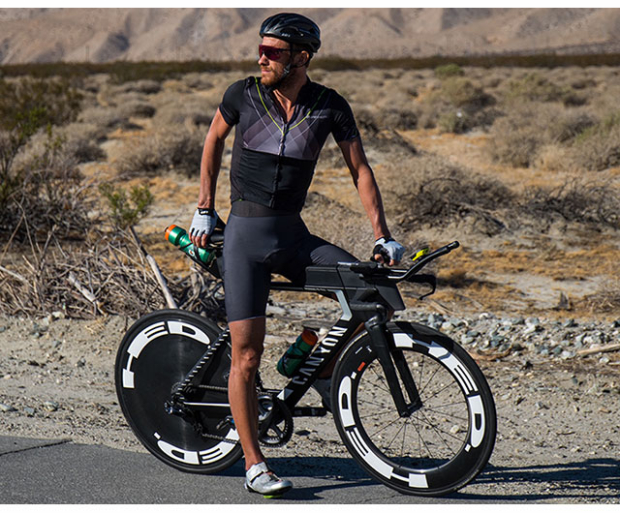
Start the discussion at slowtwitch.northend.network